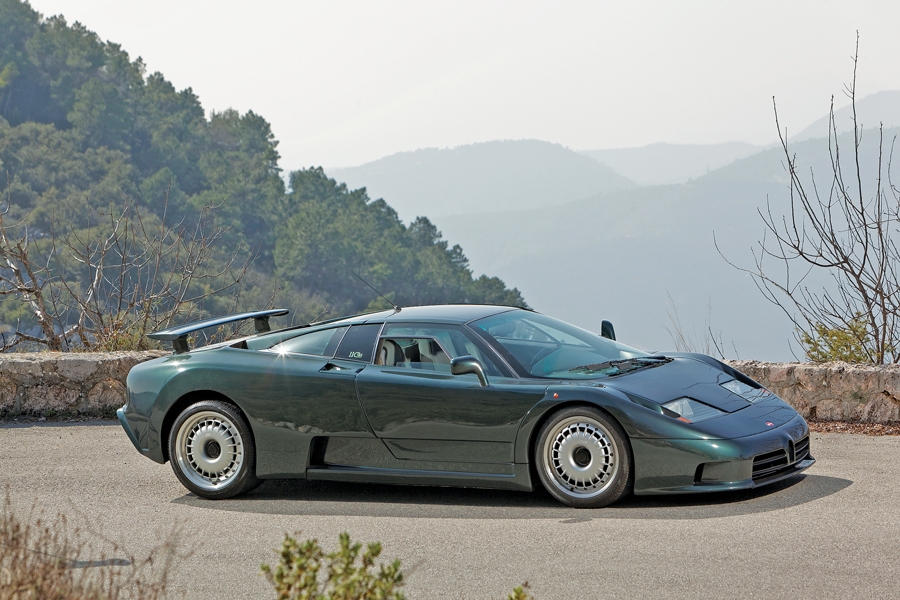Chassis Number: ZA9AB01E0PCD39031
Italian Ferrari dealer Romano Artioli dreamed of resurrecting one of the most storied marques in automotive history: Bugatti. Artioli’s Bugatti Automobile SpA was established in October 1987, and construction of a new, state-of-the-art factory in Campogalliano, Italy, began the following year. When it was ready, the EB110 — Ettore Bugatti 110, honoring the great man’s 110th birthday — debuted on September 15, 1991, in front of the Grande Arche de la Défense in Paris.
The EB110 GT was a supercar in the truest sense of the word, as it was powered by a 3.5-liter V12 with four turbochargers, which was an industry first. Mated to a 6-speed manual transmission, it was capable of producing 560 horsepower, sufficient to move the EB110 GT to a top speed of 213 mph. The angular, modern styling was penned by Giampaolo Benedini and Marcello Gandini, and it bore Gandini’s signature “scissor doors,” which only added to the model’s exotic looks.
Unfortunately, due to the effects of a worldwide economic recession, the success of the new Bugatti proved short-lived. The manufacturer went bankrupt in 1995, and its assets were sold to Jochen Dauer, whose resources allowed for an additional 11 production cars to be completed before production of this fascinating supercar ceased for good.
On May 11, 1993, this car, finished in the incredibly rare shade of Verde Scuro, was delivered to its original owner, a German enthusiast by the name of Polhmann. It is believed to have later passed through the care of owners in Austria and Monaco before coming into the ownership of its present caretaker, an enthusiast based in Italy.
EB110s have always had a strong following, as they provide incredible performance even by today’s standards. Even though Artioli’s Bugatti was short lived, it still carried on Bugatti’s tradition of creating the finest sports and racing cars for the most discerning of clients. The odometer on this example reads just over 24,000 kilometers (14,912 miles) from new, and when considering its striking dark green finish and incredible condition, this is truly an opportunity not to be missed.

